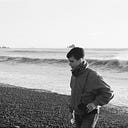I Am Here
An Interview with Keisha Scarville
By Kenesha Julius | Moko Magazine
Keisha Scarville is a photo and multimedia artist who alters and reforms the perception of regular items through themes of transformation, migration and displacement. Raised by Guyanese parents, the Brooklyn based artist uses her art as a means of expressing her nationality and homeland, which has allowed her to be exhibited in a wide number of locations, for example, The Brooklyn Museum of Art and the Studio Museum of Harlem. In this brief interview, Scarville discusses her intuitive direction in both art and photography as well the artistic process surrounding them.
There is a lot of depth in you artwork. Do you find yourself using a form of critical theory to express your work? Does it affect your creative process and thinking?
There is no particular critical theory that completely informs my work. My work is influenced by various writers and philosophies. I love the writing of Gaston Bachelard. His book, ‘The Poetics of Space’, has changed the way I approached photographing spaces and landscapes.
In the Passport series, you have touched on the issues of immigration through the eyes of two generations and through the art of mixed media. How has using this type of medium help justify your artistic vision?
The series, “Passports” is an ongoing project where I repeatedly reinterpret my father’s earliest passport photo. I am interested in the aesthetics of a passport photo as a signifier but also the guidelines that inform how one positions and presents oneself within the frame. Through an interrogative process, I re-imagine the image of my father as a subject of a nation to forge a dialogue with the image. I use collage, paint, and other materials to transfigure and dislodge the unmoving stoicism of the printed image and create an alternate spatial narrative. In each piece, I respond to the shape shifting effects of immigration and my own personal history. I treat the photograph as a platform on which all these embedded and intertwined histories can be explored and layered.
Hear more from Scarville at Moko Magazine.

